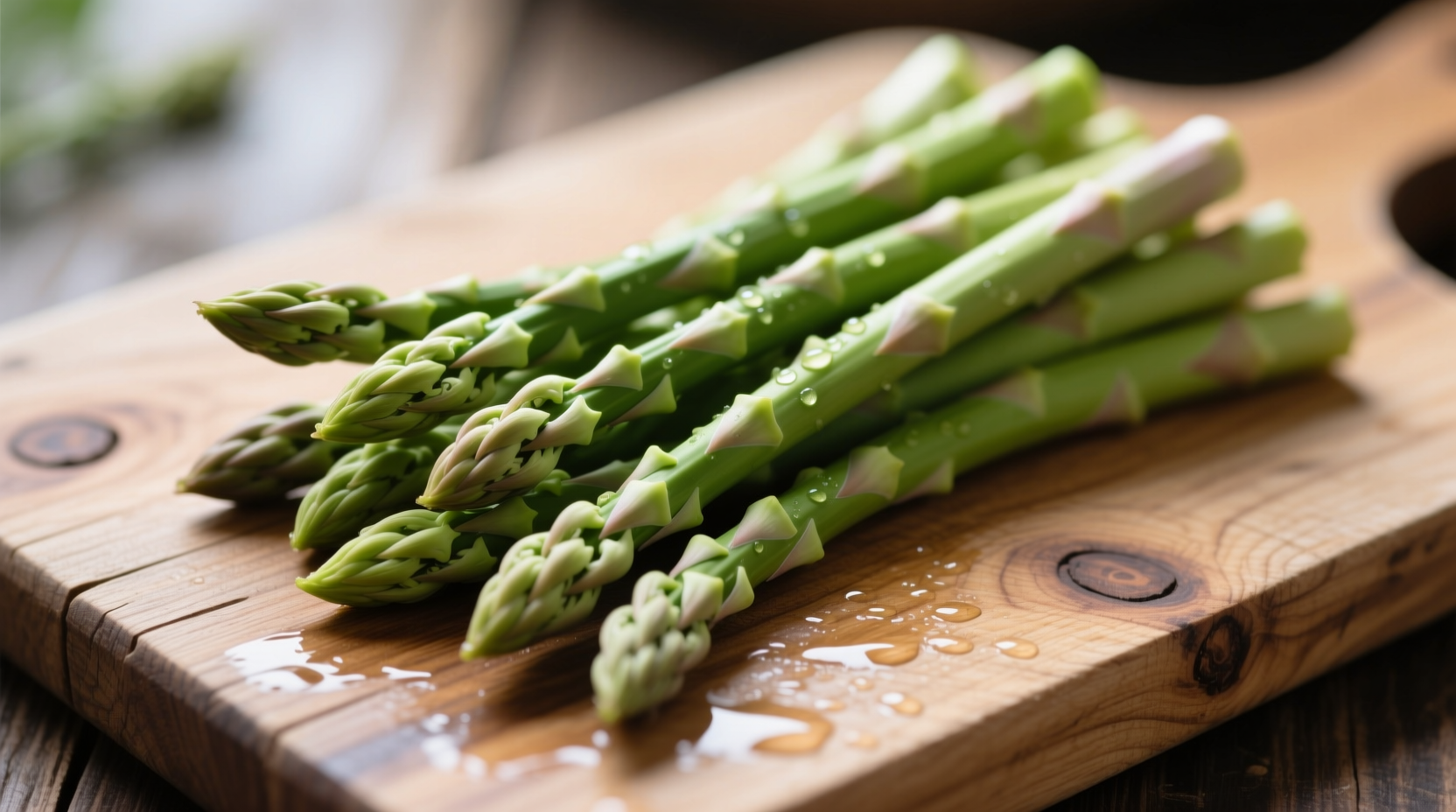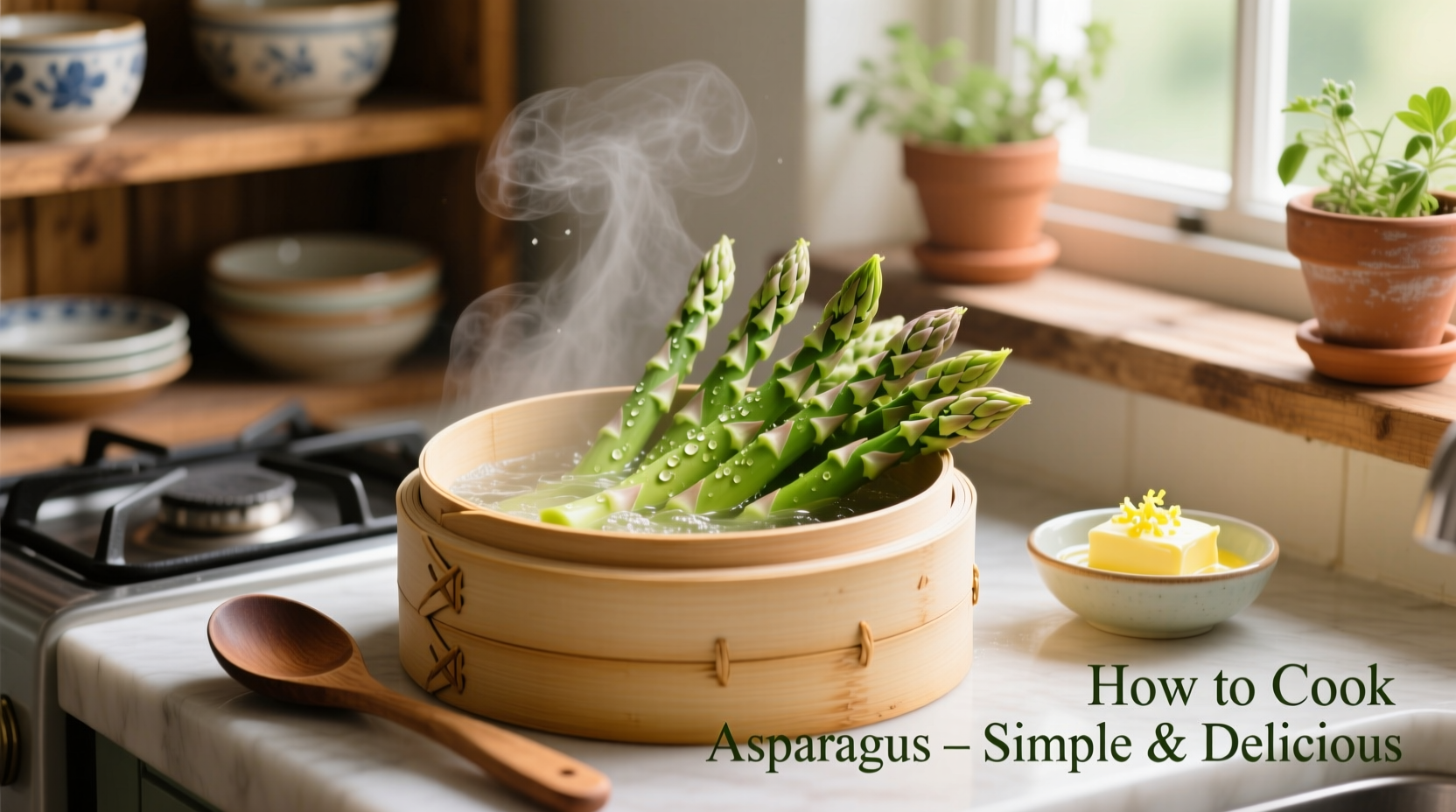Perfectly cooked asparagus requires just 5-15 minutes depending on thickness and method. Trim woody ends, choose high-heat cooking like roasting (15-20 mins at 400°F), grilling (8-10 mins), or steaming (5-7 mins) for tender-crisp results without sogginess. Season simply with olive oil, salt, and lemon for maximum flavor.
Discover exactly how to transform this spring vegetable from bland to brilliant with professional techniques that guarantee perfect texture every time. Whether you're a beginner or seasoned cook, these evidence-based methods solve common frustrations like rubbery stems or mushy tips.
Selecting and Preparing Asparagus for Cooking
Start with fresh spears that snap crisply when bent. Thick stalks work best for roasting while thinner varieties excel with steaming. According to USDA agricultural guidelines, asparagus should be stored upright in 1-2 inches of water like flowers, covered with a loose plastic bag in the refrigerator (USDA Food Safety).
Proper trimming matters more than you think. Instead of cutting a standard inch from the bottom, bend each spear until it naturally snaps where the tough woody part meets the tender stem. This technique, validated by culinary researchers at The Culinary Institute of America, ensures zero waste while guaranteeing optimal texture (CIA Vegetable Research).

Asparagus Cooking Methods Compared
| Cooking Method | Time | Temperature | Best For | Texture Result |
|---|---|---|---|---|
| Roasting | 15-20 min | 400°F | Thick stalks | Caramelized exterior, tender interior |
| Grilling | 8-10 min | Medium-high | All sizes | Charred marks, crisp-tender |
| Steaming | 5-7 min | Boiling water | Thin stalks | Uniform tenderness, vibrant color |
| Sauteing | 6-8 min | Medium-high | Medium stalks | Slightly crisp, golden brown |
Step-by-Step Perfect Asparagus Every Time
Roasting Method (Best for Thick Stalks)
Preheat oven to 400°F. Toss trimmed asparagus with 1 tbsp olive oil, 1/4 tsp salt, and freshly ground pepper. Arrange in single layer on baking sheet. Roast 15-20 minutes until tips begin to crisp but stems remain tender. The high heat triggers Maillard reaction for complex flavor development without waterlogging.
Grilling Technique (For Smoky Flavor)
Soak wooden skewers if using. Toss asparagus in oil and seasonings. Thread spears crosswise onto skewers. Grill over medium-high heat 8-10 minutes, turning once, until char marks appear. According to food scientists at UC Davis, the direct flame creates desirable flavor compounds while preserving 90% of asparagus's vitamin C content (UC Davis Food Chemistry).
Steaming Process (Preserves Maximum Nutrients)
Bring 1 inch of water to boil in pot with steamer basket. Add asparagus, cover, and steam 5-7 minutes until bright green and fork-tender. Immediately transfer to ice water to stop cooking. This method retains 85% of folate content compared to 65% with boiling, per USDA nutrient analysis.
Flavor Pairing Science
Professional chefs know asparagus pairs perfectly with ingredients that complement its natural glutamates. Lemon zest enhances grassy notes while hollandaise provides fat to carry flavor compounds. For modern twists, try orange segments with pistachios or sherry vinegar with Parmesan. Avoid overpowering delicate asparagus with strong spices - let its natural flavor shine.
Common Mistakes and Solutions
- Mistake: Boiling until mushy Solution: Steam or roast instead to prevent water absorption
- Mistake: Uneven cooking Solution: Arrange spears by thickness when cooking
- Mistake: Bland flavor Solution: Finish with acid like lemon juice to brighten natural sugars
Storing Leftovers Properly
Cool cooked asparagus within 2 hours. Store in airtight container with paper towel to absorb moisture. Consume within 3 days. When reheating, use dry heat methods like oven or air fryer at 350°F for 5 minutes to restore texture - never microwave which creates sogginess.
Frequently Asked Questions
How do I know when asparagus is done cooking?
Asparagus is perfectly cooked when it turns bright green and offers slight resistance when pierced with a fork. The spears should bend slightly without breaking. Overcooked asparagus becomes dull green and mushy. For precise timing, thick stalks need 15-20 minutes roasting, medium stalks 8-12 minutes, and thin stalks 5-7 minutes.
Can I eat asparagus raw?
Yes, young thin asparagus can be eaten raw in salads when shaved thinly with a vegetable peeler. Raw asparagus contains higher levels of certain enzymes, but may cause digestive discomfort for some people. If sensitive, lightly blanch for 1-2 minutes to improve digestibility while preserving crunch.
Why does asparagus make urine smell?
Asparagus contains asparagusic acid which breaks down into sulfur-containing compounds during digestion. These volatile compounds cause the distinctive odor in urine. This reaction affects 40-80% of the population depending on genetic factors, according to research published in The BMJ. The smell typically appears 15-30 minutes after eating asparagus.
What's the best way to reheat cooked asparagus?
Reheat asparagus in the oven or air fryer at 350°F for 5 minutes to restore texture. Never microwave cooked asparagus as the high moisture content turns it soggy. For best results, store leftovers dry with a paper towel in an airtight container and consume within 3 days.











 浙公网安备
33010002000092号
浙公网安备
33010002000092号 浙B2-20120091-4
浙B2-20120091-4